- Home
- Balogun Ojetade
The Haunting of the House of Crum
The Haunting of the House of Crum Read online
The Haunting of the House of Crum
A SteamfunkateerS Adventure
BALOGUN OJETADE
Copyright © 2018 Balogun Ojetade
All rights reserved.
ISBN-13: 9781790495221
DEDICATION
I dedicate this to all the Black children who grew up playing tabletop role playing games and became smarter, better decision-makers and more empathetic because of it. And for those who didn’t—it’s never to late to join the club.
Horror in Steamfunkateers
What is horror?
Many people will say, “Why are you writing this? Black people don’t do Horror.” The problem is, usually, it’s not Black people saying this and the few times it is, that Black person is a bit… disconnected from our culture. Some fearful among us might say, “Black people live a horror movie, we don’t need to see or play horror.” But they are just saying that to hide the fact that horror scares the crap out of them, which it is supposed to.
But what is it? Is it fear? Is it thrills and chills? Is it suspense? Does it have to incorporate an element of the supernatural? Does there have to be blood or brutal violence or something that makes you want to throw up?
Simply sticking the trappings of horror into a story or game—zombies, old castles, buckets of blood, etc.—do not transform it into “horror” automatically. We’ve all laughed through many a zombie movie, and have watched Blade wade through scores of vampires in the Blade movies without feeling a quiver of fright. For, while Blade is a great movie, it is an action movie… with horror elements, not horror.
For role-playing purposes, horror is simply a genre whose goal is the evocation of fear in its participants. That fear can range from primal to psychological. A mood of tension, or suspense, is generated by the participants’ emotional investment in the story and their personal dread of what will be revealed therein. The object of this fear is something that is somehow “bad” or “not normal.” A work that produces this fear is defined as horror.
Why try to create horror in a role-playing game?
Because it’s fun. Horror has existed from the earliest times—from Africa, to Asia, to Europe, to the Americas and ever place in-between. People have enjoyed being scared vicariously for as long as they’ve been creating fiction. Just as romance or heroism is a universal component of humanity’s stories, horror is one as well.
How do I create horror in a role-playing game?
Much of what it takes to create horror in a role-playing setting is personal investment. The players must find the situation that their characters are placed in to be personally and emotionally compelling, or horror will not be generated—you can kill a character gruesomely, but that doesn’t mean you have created a horrifying experience.
Generating personal investment has to begin before you start a horror adventure. Players need to be comfortable with in-character play, feel attachment to their characters, and generally be invested in the alternate reality of the game world to some degree. Otherwise there is not enough relation of the player to the game to feel horror.
As the game progresses, whether it is a one-shot scenario or a multiyear campaign, there is a critical need for good dramatic timing. The sense of fear should be heightened, then released—but only a partial release, building into more horror. Then it should be heightened to a fever pitch, brought to some kind of direct conflict, and then, and only then, fully released. You as a GM have an advantage that no author, playwright, or director does—you experience direct feedback from your participants as the plot unfolds. This is your most valuable tool. You can see when they are scared and want more, or when they are overloaded and need a respite, or when they are truly uncomfortable and horrified. You are free to adapt anything you want in order to maintain the mood. Speed up, slow down, cut out, and add to as needed. Don’t adhere mindlessly to “your plan,” and you should have a great adventure that scares the hell out of your players, on your hands.
The Haunting of the House of Crum is such an adventure, Enjoy!
ACKNOWLEDGMENTS
I’d like to thank all those who have helped to make Steamfunkateers a bestseller and the great game that it is. We feel the love and support and will continue to grow and bring you even more Funktasticness because of it.
The Haunting of the House of Crum
George Speck—also called George Crum—was a wealthy restaurateur, chef and creator of the “potato chip.” He originally worked as a hunter, guide, and cook in the Adirondack mountains, and became renowned for his culinary skills after being hired at Moon’s Lake House on Saratoga Lake, near Saratoga Springs, New York.
Speck’s specialties included wild game, especially venison and duck, and he often experimented in the kitchen. During the 1850s, while working at Moon’s Lake House in the midst of a dinner rush, Speck tried slicing the potatoes extra thin and dropping them into the deep hot fat of the frying pan, which led to the creation of “Saratoga chips,” now known as potato chips, and great fame and wealth.
Speck was born on July 15, 1824 in Saratoga County in upstate New York. His father, Abraham Speck, was a mulatto (half Black and half white) jockey of great renown and his mother, Diana Tull, was a Mohawk Native American.
By 1860, Speck had opened his own restaurant, called Crum’s, on Storey Hill in Malta, New York. His cuisine was in high demand among Saratoga Springs’ tourists and elites: “His prices were the same as those of the fashionable New York restaurants, but his food and service were worth it. According to popular accounts, he was said to include a basket of chips on every table. One of the regular customers at Crum’s was Commodore Cornelius Vanderbilt, who, although he savored the food, could never seem to remember Speck’s name. On one occasion, he called a waiter over to ask “Crum”—”How long before we shall eat?” Rather than take offense, Speck decided to embrace the name, figuring that, “A crumb is bigger than a speck.”
With none but rich pleasure-seekers as his guests, Speck kept his tables laden with the best of everything, and for it all charged high prices.
Speck, or “Crum,” as he came to prefer to be called, was no stranger to wealth, however. His family had been wealthy and influential since he was a child. A precocious, charming boy, Crum matured first into a vain, dissolute youth—who thought himself better than the few other free Negroes due to his white ancestry—and then a jaded, amoral adult. He had the power, money, and influence to satisfy his every desire and did so—but it was not enough to overcome his boredom.
Crum first tried to satiate his ennui by working—as a hunter, guide and cook, then as a farmer and restaurateur, and then he turned to necromancy and eventually devil worship as a means to alleviate his world-weariness and boredom.
He communed with elemental entities, slew his servants and raised them from the dead, and even summoned demons from Beyond, but he found no pleasure in any of these activities. Crum eventually came to the conclusion that the mortal realm offered him nothing but tedium and so committed suicide according to a ritual found in an ancient book of magic spells and invocations in the hope that the next world might prove more interesting than the present one.
Crum’s consciousness persisted after his death, just as he had hoped. Rather than moving on to some other plane of existence—or even the heaven, hell, or purgatory preached by the Church—his being was instead bound to his earthly home for reasons he had neither anticipated nor could explain. He could not move on to whatever reward—or punishment—awaited him in some afterlife. Instead, he remained forever linked to his estate.
Unable to manifest himself in a visible form for long, Crum can, however, influence events within his old home and command his now u
ndead servants (see Crum’s Fun, below). He can also create a magical barrier that prevents entrance to and egress from the estate’s grounds. This last ability is the primary way Crum now seeks to entertain himself: trapping foolhardy travelers and tormenting them. As soon as the characters enter the grounds of the estate, they are Crum’s prisoners and he intends to make full use of them for his own purposes.
Involving the Characters
Depending on how the GM intends to use this adventure, the characters can become involved in several ways:
First, they may simply stumble upon the estate while traveling through Saratoga Springs and then enter it, unaware of its curse.
Second, the characters may have heard tales of the estate, Crum, or the curse affecting both and seek it out to see for themselves.
Finally, Crum’s sister, Catherine Wicks, might employ the characters to explore the estate so that she might lay claim to anything of value, as she asserts that she is the actual creator of Saratoga chips and that her brother stole the credit, and the wealth, from her.
Other possibilities exist, of course, and the GM is encouraged to use the estate and its inhabitants in any way that best fits the current needs of his or her campaign.
Random Events
Though dead, Crum is still bored. He seeks diversion and, hopefully, release from his earthly bondage by toying with any living beings that enter the ruins of his former home. Unfortunately, Crum has become, if anything, even more fickle and malicious in death than he was in life. Thus, what he believes will divert him from his own suffering at any given time is seemingly random, at least as far as outsiders are concerned.
Every time the characters enter a keyed area—even one that they have previously explored—roll a d66 once on the following Random Events table and apply the event.
What is a d66, you ask?
Roll 2 six-sided dice. Designate one as the tens and the other as the units. Add the two numbers and you have your result. For example if you roll the “tens” die and get a 3 and you roll a 5 on the “units” die, the result is 35.
With a d66, you can get a score of 11-66.
Some of the possible events are repeatable and others are not. If the same non-repeatable event is rolled more than once, use the next non-repeatable event on the list.
The same thing happens if the event refers to an encounter with one of the household staff who has been destroyed. Most of the events are written in a broad enough fashion so as to be usable in any keyed area of the estate and the surrounding areas, but the GM is encouraged to make whatever alterations or substitutions are necessary so that the event “fits” the characters’ current whereabouts. GM modification is especially necessary in the hedge maze, as it is an outdoor area without doors, windows, etc.
These random events are a vital part of running this adventure, which is why the table below has so many entries. The estate is a strange, creepy, and, at times, whimsical place, and the entries below reflect that.
If so desired, the GM can replace some of the entries with ones of his or her own devising. Anything that might occur in a horror movie or haunted house is appropriate—but so is anything odd, peculiar, or even funny. Crum’s consciousness has been bound to the estate for decades now and he has gone quite mad in his efforts to free himself. Who knows what peculiar happenings he might bring into being in a desperate attempt to entertain himself?
Random Events (Roll D66 and compare it to the result below):
11. A deck of playing cards appears on a nearby table or shelf (or on the ground, if outside). The cards are stained with fresh blood.
12. A character looking into any nearby reflective surface (a mirror, window, water, etc.) sees not her own face but a red-skinned demonic one instead.
13. A statue, painting, or other work of art speaks the name of a random character and tells her, “Flee, while you still can!”
14. The characters hear disembodied cackling coming from behind the closest door or wall.
15. A colony of bats flies about the characters’ heads but disappears into thin air before it reaches them.
16. The closest door suddenly swings open with a loud bang. Reroll if there are no doors nearby.
17. One of the characters briefly feels as if dozens of crawling insects have gotten under her clothing or armor, when in fact no such thing has occurred.
18. The next step a random character takes causes a black slimy substance to bubble out onto the surrounding area from beneath the ground/floor. The slime is not dangerous but it has a noxious odor, like spoiled milk mixed with human feces. This event cannot occur on the upper level of the estate, in which case nothing happens.
19. One of Crum’s dogs wanders into the area, barks loudly, and then attacks the nearest character.
20. Johnny walks in the direction of the estate’s kitchen (area G6). He takes no notice of the characters unless they impede his progress in any way.
21. Tobias appears and says to the characters, “Can’t you follow directions? The stables are that way.” He then waits to see that the characters actually leave the estate (he will open even a magically locked door) before heading toward his room. If the characters do not leave or attack him, he will call for Bruce and Brice to deal with them. Reroll if already outside the estate.
22. Lucy Mae crosses the characters’ path. She stops to ask if the characters have seen Afrodil, as “the Master wants her.” The characters’ response to her (including their truthfulness) does not matter; she will head toward the meeting room (see area G15) afterward.
23. Afrodil can be seen crying in the corner of the area. She will not say anything to the characters and, if approached, will fade out of view.
24. Henry appears. He simply smiles at the characters before proceeding away from them and fading out of view. If attacked or impeded, he calls on Bruce and Brice to aid him.
25. Tilda and Lucy Mae both run at the characters, attacking them.
26. Mingo stomps loudly through the area, heading to Tobias’s chambers (area G5).
27. Chantillion appears, asking the characters to hide him from Delany, who is apparently very upset with the way he has been shirking his duties. If the characters make an effort to help Chantillion, he will disappear shortly afterward. If they do not, he will first plead with them and then fly into a rage and attack them.
28. Bruce appears, offering to show the characters to whatever area they wish to visit next. He refrains from answering most questions, saying “That’s not for me to say, madam (or sir).” He will defend himself if attacked but will otherwise not interact with the characters beyond the specific task they have given him.
29. Alfred appears and offers to escort the characters to the meeting room (area G15), where Tilda and Lucy Mae await (assuming they have not been destroyed) to attack and devour them.
30. Betty Jo moves into view, cleaning and generally straightening the area. She will ask the characters to leave the area until she is done. If they do not comply, she will summon Bruce and Brice to handle the matter for her.
31. The door knob of the room turns into a tooth-filled mouth and bites the character that touches it, dealing a Mild, Fleeting Condition. If there is no door, nothing happens.
32. Henry comes running at the characters, laughing happily. He simply passes through them before disappearing completely.
33. Brice appears, offering to lead the characters into the next area. He will defend himself if he is attacked but will otherwise not interact with the characters beyond the performance of his duties.
34. A spectral hand reaches up and tries to grab the ankle of the character with the lowest rank in Physique. This is an opposed conflict. The spectral hand grapples as if it had a Melee: 5 and a Physique: 5, with the Grappler feat. If the PC fails, the grab causes a Mild, Fleeting Condition and holds the character until he or she (or another character) attempts to break the hand’s hold, after which the hand vanishes.
35. A dagger flies at the first character to en
ter the area. Treat the dagger as a PC with Marksman: 6 for determining its chance to hit. If successful, it causes a Moderate, Lasting Condition, after which it falls to the ground and is a perfectly normal dagger.
36. Flora is heading toward the kitchen (area G6). She scowls at the characters as she goes by, but otherwise takes no notice of them. If attacked, she calls on Johnny to protect her, but he never arrives.
37. If the area has any windows, they audibly crack and shatter, sending shards flying everywhere. The shards deals a Mild, Lasting Condition to anyone within 5 feet. Should the PCs ever return to this room, the window will no longer be broken.
38. Tobias appears, carrying a book in one hand. He gives the book to one of the characters, saying, “The Master wants you to read this before dinner this evening” before he departs. The book is, however, completely blank and has no title or author on the cover or spine.
39. The characters hear a female voice say, “I thought you didn’t like uninvited guests.”
40. Bruce walks into view, smiling and muttering to himself, “It was still worth it.” If no one attacks him or impedes him, he will continue to walk away.
41. Brice wanders into the area, clutching his split head and moaning through his bifurcated mouth. He completely ignores the characters unless they attack him or otherwise impede his movement.
42. Chantillion is found sleeping in the next area. If he is awakened, either on purpose or by making loud noises, he will fly into a rage and attack the characters.
43. The shadow of one of the PCs begins to noticeably distort and take on other shapes, including that of a horned demon, before it returns to its original shape.
44. An insubstantial cat crosses in front of the characters’ path before disappearing. The first character to walk beyond where the cat appeared suffers a -1d penalty on his or her next roll.

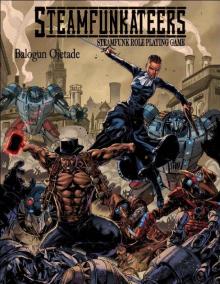 Steamfunkateers
Steamfunkateers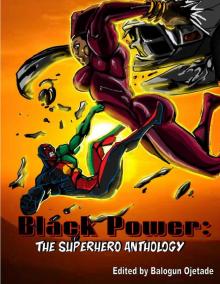 Black Power- The Superhero Anthology
Black Power- The Superhero Anthology Gunsmoke Blues
Gunsmoke Blues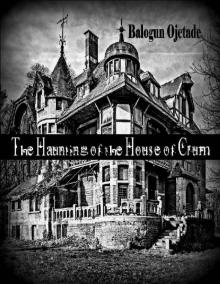 The Haunting of the House of Crum
The Haunting of the House of Crum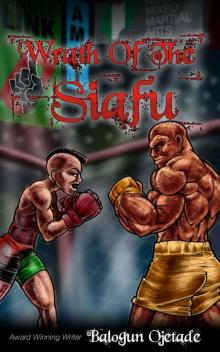 Wrath of the Siafu- A SIngle Link
Wrath of the Siafu- A SIngle Link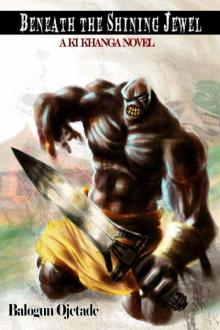 Beneath the Shining Jewel
Beneath the Shining Jewel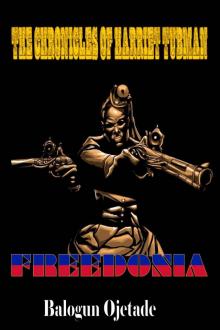 The Chronicles of Harriet Tubman- Freedonia
The Chronicles of Harriet Tubman- Freedonia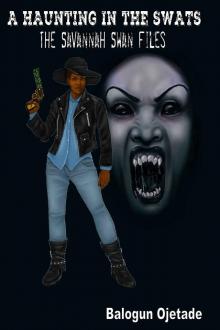 A Haunting in the SWATS (The Savannah Swan Files Book 1)
A Haunting in the SWATS (The Savannah Swan Files Book 1)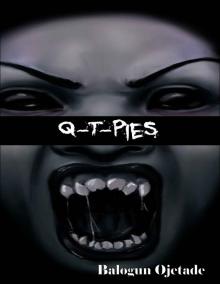 Q-T-Pies (The Savannah Swan Files Book 0)
Q-T-Pies (The Savannah Swan Files Book 0)